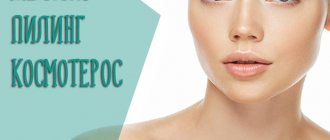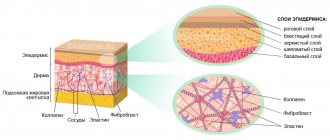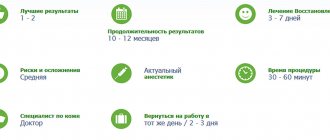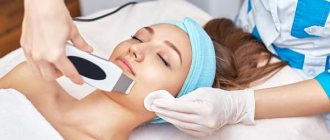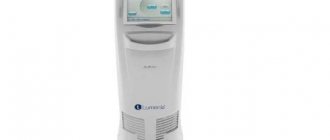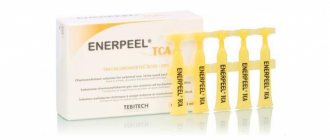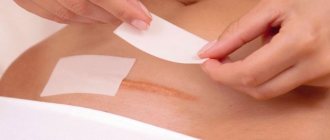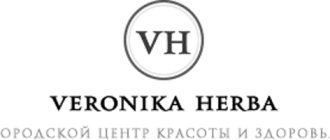Laser resurfacing or chemical peeling: which is better to choose?
Laser resurfacing or chemical peeling: which is better to choose for maximum results.
For many years in a row, chemical peels have been famous for their excellent action and results. However, with the development of laser technologies, laser technologies are confidently winning the podium. More and more beautiful women are abandoning aggressive effects on the skin in favor of a more gentle method.
What is better to choose, grinding or peeling, is up to you to decide. If you find it difficult to choose, specialists with extensive experience at Coolaser Clinic will be happy to answer all your questions.
Laser resurfacing and chemical peeling. What are the similarities?
Both methods have the same focus on the result - removing the stratum corneum of the epidermis (dead cells) and stimulating basic processes.
Why is removing dead cells from the surface of the skin so important? It's simple. In order for cells to actively renew themselves, they must not have any obstacles. The better the epidermis is cleansed from the stratum corneum, the less inflammation and the better our skin is renewed.
What is better - peeling or laser resurfacing?
Peeling is a light procedure to slightly improve the condition of the skin. The effect is carried out only on the very top layer of the skin.
Resurfacing is a radical procedure during which the skin is replaced with a new, healthy one. Realization – up to 14 days. But the result is great!
In the professional medical language of English-speaking cosmetologists, the word “resurfacing” appears, which most succinctly and accurately reflects the task of laser rejuvenation procedures.
Chemical peeling
Any chemical peel is divided into three categories: superficial, medium and deep. Each of them is aimed at a specific layer of the dermis.
Depending on the patient’s skin type, the appropriate active ingredient is used (usually alkali or acid):
- sensitive – glycolic acid
- dry – milk peeling
- for inflammation - salicylic acid
- fatty acid – retinoic acid
In fact, any chemical peeling is a dosed burn of the epidermis. After it heals, the cells are renewed, the skin looks soft and healthy again.
Benefits of Chemical Peels
- safety
- small percentage of complications
- eliminates inflammation
- corrects scars and scars
- removes age spots
Time: 30-60 minutes
Number of sessions: individually depending on skin type. On average 5-6 procedures .
Duration of effect: individual
Risks of complications: quite high risks when using medium and deep peels, severe pain during the procedure.
Laser rejuvenation is the most modern skin renewal procedure!
Professional cosmetologists prefer laser procedures to outdated chemical (acid) peels. The effect that is noted after laser and chemical exposure is very similar, but the possibility of various options when using wide settings of the laser device makes this procedure more flexible and applicable for more “fine” correction of the patient’s skin.
The experience of our cosmetologists (and especially Levon Chakhoyan, who is also an active plastic surgeon with a deep understanding of anatomy) allows us to promise patients truly the best results! Check out the before and after photos.
Please note that the cost of laser rejuvenation with the head doctor of the clinic, Levon Chakhoyan, is the same as with any other cosmetologist at our clinic. If you have never been to us before, we recommend taking advantage of our promotion and getting a 15% discount on your first visit!
Telephone consultation is always free!
Leave your contact, we will tell you everything and offer a discount!
Send
Thank you!
Information has been sent to the clinic administrators!
Laser peeling
Laser facial resurfacing or laser peeling is a deep cleansing, it can be compared to a medium and deep chemical peel.
Laser resurfacing or laser peeling is more gentle. Its action is based on the vaporization process. That is, dead skin cells are literally evaporated from the surface of the epidermis.
The laser wave, whose length and depth are fully programmed and controlled by the device, treats the skin area. There is water inside every cell; it completely absorbs this energy.
Why is laser facial resurfacing sometimes called fractional? After laser treatment, tiny dots - fractions - may remain on the epidermis. Fractional laser resurfacing is based on the name of these points.
For those who want to understand more about laser rejuvenation
Impact level
For those who want to delve into the details of laser procedures, you need to know that laser exposure, according to the degree of impact, is conventionally divided into light (laser peelings), medium (various parameters and settings, usually such procedures are called laser rejuvenation) and intense (laser resurfacing).
In fact, this is a non-professional classification that came from the field of chemical peels. There is no clear boundary between light and intense effects; some cosmetologists even distinguish only two types of laser effects: peelings and resurfacing.
Type of impact
You can often hear the term photothermolysis - this is the process of exposing tissue to light energy in order to “decompose” or “evaporate” what is the target of thermolysis. Laser hair removal and IPL procedures also refer to photothermolysis and target melanin. This is a general term emphasizing the nature of the effect and includes laser exposure.
If the light beam does not damage the skin, then such an effect is called non-ablative .
Non-ablative procedures are notable for the fact that they heat the tissue up to 40-85°C. This threshold is not enough to “evaporate” tissue, but is enough to damage old collagen in order to stimulate neocollagenesis. Non-ablative laser rejuvenation is similar to RF lifting, but differs in a different principle of action.
The procedure is indicated for patients with a mild deformation type of aging (“floating” face oval, jowls, bags under the eyes, etc.) and is designed to prolong the youthfulness of the skin. Sometimes it is prescribed for complex treatment of acne.
For example, non-ablative effects are IPL procedures, but this is not a laser, but a light effect.
If after exposure to a laser beam traces remain (burnt “wells”, “furrows”, etc.), then such an effect is called ablative .
Typically, ablation is exclusively a laser procedure. Therefore, the term “laser ablative photothermolysis” is “oil of oil”, but from the point of view of terminology it is quite applicable: laser (type of light exposure) ablative (with violation of the skin) photothermolysis (type of procedure). The combinations “laser ablative peeling” and “laser ablative resurfacing” are often used, which emphasize the degree of impact.
As a rule, the laser beam of the devices affects the patient’s skin within a square area (therefore, the treatment area after the procedure is visually divided into squares).
If within these squares the beam burns out points (that is, it does not affect the continuous surface of the skin), then such an effect is called fractional. Almost all laser procedures aimed at skin rejuvenation are fractional. Although if you set up the device in a special way, you can “burn” all the skin within a square - this is classic continuous grinding.
The combination of these terms - ablation, fractional, photothermolysis, resurfacing, peeling - can get confusing! The biggest confusion is in the term fractional laser resurfacing.
Resurfacing is the basis of laser rejuvenation.
Laser resurfacing is the first term that arose when laser technologies appeared in cosmetology, and therefore gave rise to a lot of erroneous understandings of the essence of hardware procedures.
Initially, it was believed that any (not just laser) resurfacing was a continuous impact on an area of the skin. Therefore, many old-school specialists view the term “fractional” (that is, not continuous) grinding with hostility.
Moreover, many (not only patients, but also doctors) call any fractional photothermolysis laser resurfacing, although laser peeling is also fractional photothermolysis.
Peeling using laser machines is carried out on light parameters, affecting only the epidermis, so it is considered a skincare procedure.
Here you need to understand that peeling and grinding are common concepts, and photothermolysis (simply thermolysis, ablation) are special, pseudo-scientific concepts.
Thus, the following scale of concepts is usually used: fractional ablation = ablative fractional photothermolysis. If on light settings, then this is laser peeling. If on “intensive” parameters, this is laser resurfacing. If it’s somewhere in the middle, then the term has not been invented and is simply called fractional photothermolysis or “laser rejuvenation.”
Goals of laser exposure:
- Reduction of skin flaps (biological lifting);
- Alignment of skin texture;
- Smoothing age-related furrows and folds;
- Mitigation of scar changes (including removal of stretch marks and postoperative / post-traumatic hypertrophic scars).
The choice of treatment parameters is the prerogative of the doctor!
Benefits of fractional facial resurfacing
- Safely. No punctures or serious interventions
- Painless. For your comfort, we apply an anesthetic gel before the procedure. To prevent the risk of burns, we additionally blow cool air onto the area.
- Long lasting results
- Any time of year. It doesn’t matter at all whether it’s winter or summer outside. Laser facial resurfacing can be done at any time of the year and in any weather.
Fractional or laser resurfacing is an ideal way to tighten facial skin without surgery. Thanks to modern CO2 laser technologies, it has become possible to restore youth to the face without surgery.
After a course of procedures, your face will again be elastic and toned, with a healthy complexion. Laser resurfacing perfectly removes scars and scars, including post-acne. Smoothes wrinkles and gives the skin a youthful glow.
Just look at the amazing review about laser resurfacing from our patient:
Laser resurfacing reviews
Time: 10-20 minutes, depending on the sanding area
Number of sessions: on average 4 procedures, between polishings there is a break of 10-20 days
Duration of effect: up to 1.5 years
Risks of complications: virtually none
Rehabilitation: on average 7 days, on the second day you can apply makeup.
In the photo, by day before and after, skin after laser resurfacing by day:
What's on the Internet?
Although you may have read an article about laser rejuvenation on some website, please ask all your questions directly to our doctors or administrators. The amount of “nonsense” in the vast expanses of the global network is growing very quickly.
Example: fragment from an article about laser rejuvenation.
In fact: laser resurfacing is the most “powerful” type of laser treatment; no laser procedures are performed at home (unless you have a laser device at home costing at least 5 million rubles and have a medical license); The most popular type of laser for resurfacing is the carbon dioxide CO2 laser; There is no laser birevitalization.
Only 6 lines, but so many lies! Don't trust the "internet". Trust only trusted sources like us! 
Biorevitalization before laser resurfacing
You can start preparing with biorevitalization. Since during laser resurfacing the skin actively loses moisture and liquid evaporates, it is better to replenish moisture and nutrients in advance. This can be done using biorevitalization.
- The biorevitalization procedure is performed 2 weeks before resurfacing.
Typically, a specialist chooses either a product with pure hyaluronic acid or a composition supplemented with vitamins and other active ingredients. Saturating the skin will help eliminate signs of stress, fatigue, even out color, and remove dark circles.
- Biorevitalizant fills the skin with microelements, amino acids and hyaluronic acid
- Additional hydration is also recommended to replenish deficient conditions in the skin, as well as to accelerate the recovery and regeneration of skin cells after resurfacing.
- As a result, the recovery period is reduced from 14 – 30 days to 7 – 10 days
Combining laser resurfacing with biorevitalization will allow you to get rid of facial wrinkles, signs of post-acne, enlarged pores, and as a pleasant addition, the oval of the face will tighten and become chiseled.
Skin resurfacing
The procedure for resurfacing facial skin with a laser is a slightly different effect than peeling. Although many equate them. In fact, sanding works more intensively.
Features of the event
Laser resurfacing involves the use of a type of radiation that can penetrate the skin to a depth of 150 microns. The mechanism of action is the same as during peeling. But the damage done to the skin is much greater. Accordingly, its regenerative abilities increase, and the result if the procedure is done correctly is much more noticeable.
Laser resurfacing is otherwise called medium or deep peeling, since the basement membrane and dermis are injured. Only powerful carbon dioxide radiation can reach such layers.
To use this type of laser, a specialist must be highly qualified, since the slightest inaccuracy in setting parameters can lead to serious problems. And in order to protect the patient from complications, during preparation she may be recommended to take antibiotics and antiviral agents.
The grinding procedure algorithm is similar to what happens during peeling. But special attention should be paid to anesthesia; sometimes it can be general. The procedure is quite painful, as it involves not only removing the stratum corneum of the epidermis, but also burning out areas of the skin at depth. For this reason, rehabilitation will take longer, and with serious restrictions. For a long time, for example, other cosmetic procedures are prohibited.
Masks, wraps, peeling after laser resurfacing done too early can lead to skin injury.
To learn how laser facial skin resurfacing is performed, watch this video:
Benefits of Sanding
The main advantage of grinding is its result. The list of advantages includes several factors:
- The procedure copes with more defects than peeling. She is able to remove pronounced scars (atrophic and hypertrophic), stretch marks, tattoos.
- Its most important property is a high degree of tissue rejuvenation. Recovery occurs at the depth where the collagen layer of the skin is located. Due to the damage caused, cells begin to actively divide. This leads to tissue tightening, a decrease in the severity of deep wrinkles, and the disappearance of small ones.
- Laser resurfacing is effective at a fairly mature age. The result is such that it can delay the need for anti-aging plastic surgery for a long time.
- The effect lasts for 2 - 4 years . Peeling does not give such long-lasting results.
Result of facial scar removal
Contraindications and side effects
The severity of the effects of laser resurfacing does not allow it to be performed if the patient has contraindications. The entire list of diseases and natural temporary conditions that prohibit peeling also applies to them. But in addition to the previously listed pathologies, pregnancy and lactation, resurfacing is not done if there is:
- tendency to form hypertrophic and keloid scars;
- vitiligo;
- scleroderma.
And in general, the examination of the patient and determination of the need for the procedure is much stricter and more thorough than before peeling. After all, side effects can be much more serious:
- burns and blisters;
- erythema that does not go away for several months;
- pinpoint hemorrhages deep in the tissues;
- hyperpigmentation and persistent discoloration of large areas;
- dermatitis;
- crusts on the face that form not only on the surface;
- deterioration in general health (increased blood pressure, nausea);
- infection of the deep layers of the skin.
Erythema
The likely catastrophic consequences are what distinguishes laser peeling from laser resurfacing, and not just the more pronounced positive changes.
Full course and its cost
Another feature of resurfacing: unlike peeling, the course of procedures can be shorter - up to 3 - 4. If the manipulation is done on the entire face, it is possible that the specialist will limit himself to a single procedure. When it comes to correcting scars and stretch marks, several sessions will be needed.
The effectiveness of laser resurfacing also affects the price. A session can cost from 13,000 rubles. The price depends, of course, on the area of skin exposed to the laser. If it is a small scar, the procedure will cost less than, for example, the forehead or eyelids. But the number of sessions is likely to increase.
Similarities and differences
Chemical and laser peels have many differences:
- In the second case, restoration of the skin is safer. The method does not cause chemical burns. It is much easier to damage your face with fruit acids. By incorrectly calculating the dose of the product or not taking into account the individual characteristics of the skin, you can cause serious injury to the client.
- The laser carbon method makes it possible to completely control the depth of impact. This can be successfully solved to solve certain cosmetic problems. So, for example, if the skin needs to be given youth and freshness, the laser beam penetrates no deeper than 1 mm. If necessary, deeper treatment will help get rid of wrinkles. The chemical method does not allow such an accurate calculation, and therefore skin burns occur.
- Laser peeling is used for plastic lifts and corrections; chemical exposure in this case is very undesirable.
- Compared to laser grinding, chemical grinding is much cheaper.
- The chemical method can be used much more often than the laser method.
- Laser peeling can only be done in special beauty salons, where the specialists have equipment, high-quality equipment confirmed with the necessary certificates and have a medical education. Chemical peeling can also be performed at home.
At the same time, both methods, as cosmetic methods for correcting appearance, have something in common:
- With both procedures, to obtain a better result, you will have to use additional products (creams, gels, ointments). With their help, the procedure is easier, faster and gives a good effect.
- You won’t be able to get rid of numerous freckles or age spots in one go. You need to undergo a whole course of laser or chemical treatment.
- It is strictly not recommended to sunbathe in a solarium or in the sun after the procedures.
How is the procedure performed?
Before the procedure, a special anesthetic cream is applied to the skin for 40 minutes. Also, in our clinic, during the entire period of laser exposure, special skin cooling is used using a Zimmer device (Germany). Thanks to anesthesia and a stream of cooled air that is supplied to the treatment area, the procedure is completely comfortable. Typically, the procedure itself lasts from 15 minutes to half an hour; after it is completed, a healing agent is applied to the skin to accelerate regeneration.
The essence of the method: a laser beam, penetrating deep into the skin, is divided into many microbeams, which create pinpoint microscopic damage in the skin (the phenomenon of fractional photothermolysis). In areas of damage, intensive recovery processes are launched, since the ability of skin tissue to regenerate is very high. The technique involves evaporation of the surface layer of skin under the influence of a laser beam. As a result, dead skin cells and various skin defects disappear, along with which collagen production is stimulated, which provides a remarkable effect of improving skin quality.
The results of our specialists’ work bring exclusively positive emotions to patients. This is not surprising: skin color improves, it becomes smoother and tighter, pores narrow, fine wrinkles disappear.
The advantages of the procedure include:
- visible results even after one session of the procedure
- a small list of contraindications for the procedure
- short period of skin recovery (lasts 5-7 days, and all this time the patient remains socially active)
- an alternative to various types of peelings (one laser peeling session replaces 6-8 chemical peeling sessions)
Indications:
- dull complexion, uneven texture
- decreased skin tone and elasticity
- enlarged pores, increased skin greasiness
- post-acne
- manifestation of the first wrinkles and skin imperfections
Contraindications:
- the skin was exposed to ultraviolet rays for 2 weeks before the procedure (sun/artificial tanning);
- taking medications that increase sensitivity to solar radiation (vitamin A (retinoids), tetracyclines, fluoroquinolones);
- epilepsy;
- acute infectious diseases;
- herpes in the active stage;
- pregnancy
MicroLaserPeel
Laser peeling with a continuous beam MicroLaserPeel is designed to remove damaged cells at a depth of 10 to 50 microns. An impact depth of up to 10 microns is considered light peeling, from 10 to 30 – medium, from 30 to 50 – deep, and 50 and above – already grinding.
Laser peeling is safer than chemical peeling, since the effect of the laser beam is easier to control than the effect of the chemical composition. However, when performing a procedure with the MicroLaserPeel attachment, the doctor can adjust the parameters of the laser to achieve a variety of effects - from a light scrub to the equivalent of a superficial, medium or deep chemical peel.
Laser peeling with a continuous beam
With the MicroLaserPeel attachment it is effective for:
- Problem skin with enlarged pores, comedones, frequent rashes or post-acne marks.
- Pigment spots.
- Fine mesh wrinkles.
In this case, during the procedure, excess horn cells are removed, which clog pores and cause inflammation. A depth of up to 25 microns is sufficient for this.
With this problem, during laser peeling, a layer of horn cells and part of the epidermal cells with a high content of melanin are removed. As a result, pigment spots lighten and the skin acquires an even tone.
Here the depth of impact depends on the severity of wrinkles. Under the action of the laser, wrinkles are smoothed out.
After the MicroLaserPeel peeling procedure, metabolic processes in the skin are activated, a velvety matte appearance appears, and dryness disappears. It may not be enough to solve severe problems, so it is more often performed on young skin.
Recovery period
The recovery period after laser peeling ranges from 3 to 5 days and is accompanied by slight peeling of the skin.
Skin care during this time is simple. For the first 3 hours, it is enough to moisturize the skin with thermal water, then every 3 hours you need to apply a special cream with a soothing effect. It quickly rehabilitates the skin, relieves irritation and eliminates discomfort.
It takes only 4 days to restore the usual rhythm of life. The primary effect of the procedure appears after a week - the tone and texture are evened out, pores are narrowed, the skin is tightened and thickened, and dryness disappears.
This effect is increasing, and it can be finally assessed after a month. It is stored for up to six months. The result is especially noticeable in the autumn, when the skin needs restoration after the negative effects of the bright sun.
A course of laser peeling usually consists of 3-4 procedures.
Sciton's Joule laser platform offers both full and fractional peels
Full beam laser resurfacing
When grinding with a continuous laser beam, skin cells are removed to the required depth over the entire surface of the treated area. The doctor fully controls the level of laser skin ablation (evaporation of tissue) and coagulation (soldering of damaged cells).
During the procedure, old keratinized cells are removed and the synthesis of collagen and elastin is activated. Wrinkles are smoothed out, the relief is leveled, and the oval of the face is tightened. Removed skin cells are replaced with new ones.
There are a number of indications for laser resurfacing:
- Uneven skin texture.
- All types of wrinkles.
- Sagging oval face.
- Scars, scars.
- Post-acne marks.
Recovery period
Lasts 7–14 days. At this time, the skin looks like it is tanned, after which it becomes covered with a crust, which peels off within 1-2 weeks. Due to the increased impact on the skin, full resurfacing is performed in exceptional cases.
It is a one-time procedure. The effect after laser resurfacing lasts 1–3 years.
Plasma therapy + laser resurfacing
We recommend combining laser therapy with plasma therapy for owners of problematic skin prone to inflammation and signs of post-acne. With this combination of procedures, you will get smooth, beautiful skin, the texture of which is very different from the original one.
- The plasma is filled with a special component that minimizes the recovery period.
- After the procedure, patients are less likely to experience skin swelling and pain.
- The rehabilitation and healing process is significantly accelerated.
As a result, deep processes of creating new connective tissue are launched, and post-acne scars straighten out on their own from the dermis.
Possible risks and side effects of procedures
Although both types of peeling are performed only by certified cosmetologists or dermatologists, complications often arise after such procedures. The traditional version of negative consequences after cold laser treatment is:
- edema;
- redness;
- itching;
- burning.
Such symptoms of irritated skin persist for several days and then disappear on their own. The client should be concerned if:
- spots (of any color and type) appeared on the face, which were not observed before the procedure;
- redness and itching do not go away within 4 days;
- scars have appeared;
- diffuse fibrosis is observed - a condition in which the face looks like an artificial mask.
Most often, such negative consequences arise as a result of the specialist’s unprofessionalism or when the patient does not comply with the prescribed rules of behavior after performing the procedure. Dangerous consequences of the chemical peeling procedure are burns of varying degrees of complexity. You can learn about Jessner peeling by following the link.
The video shows everything about laser skin resurfacing:
In this case, you may observe:
- redness;
- impaired pigmentation (spots appear on the face);
- wounds of varying depth and area;
- edema;
- pain in the damaged area.
Among the possible causes of such complications, dermatologists especially often name low-quality products used for the procedure, too long a procedure, incorrectly calculated proportions of the substance, and sensitivity to the components of the patient’s skin.
Treatment of complications that can result from chemical and laser peels is most often symptomatic. The patient is recommended to take antihistamines, and her face should be treated with special wound-healing or antiseptic medications. You can learn about peeling for dry skin in this article.
Botox injection
This technique is one of the most common. Well restores the skin, smoothing out facial wrinkles. Consists of injection skin lifting. It is highly effective, therefore it gives an almost instant effect. It has a locally paralyzing effect on muscle fibers, relaxing them. This eliminates wrinkles of small and medium depth. In general, Botox eliminates the following wrinkles:
- at the corners of the mouth;
- on the forehead;
- on the bridge of the nose;
- on the back of the nose;
- around eyes.
Botox also effectively fights hyperhidrosis (excessive sweating) and the effect of “crow's feet” (small mesh folds). The final result is observed after 5–7 days.
Injection technique
This procedure does not cause discomfort or pain. A fairly thin needle is used for injection. However, if patients wish, an anesthetic cream can be applied to the face first. It prevents unwanted sensations.
Botox injection is performed in doses, in small portions, evenly over the entire treated surface. For better distribution of the drug, the area is lightly massaged after each injection.
